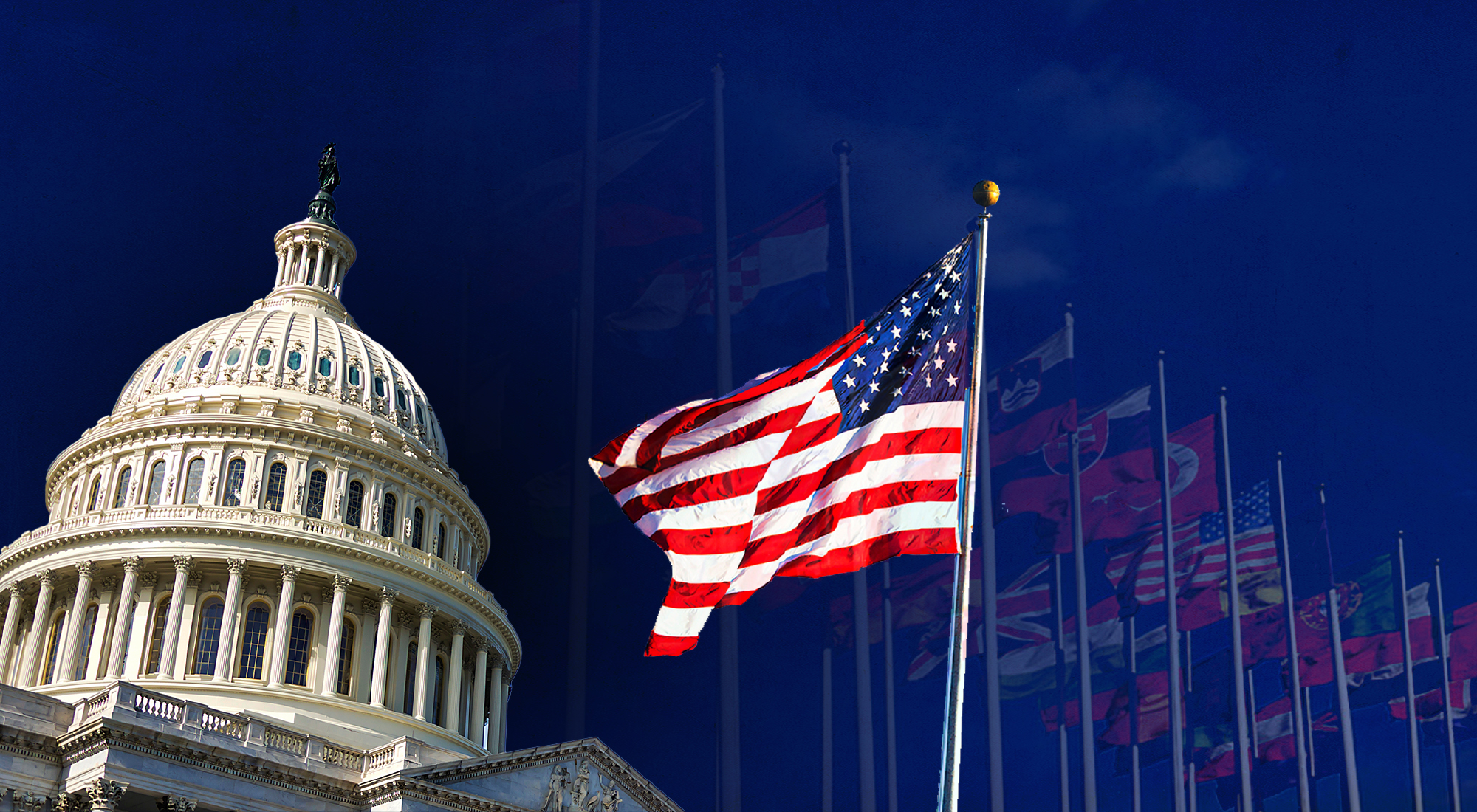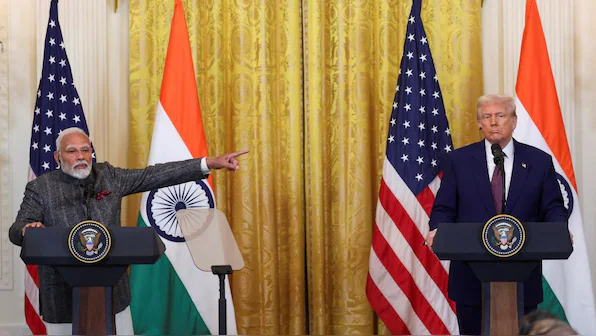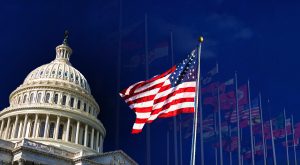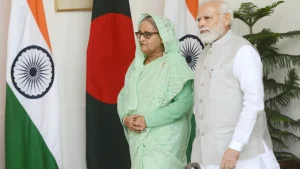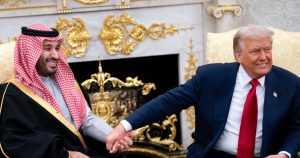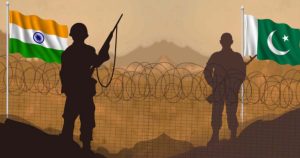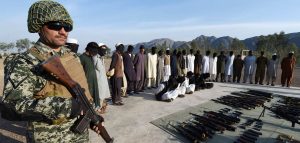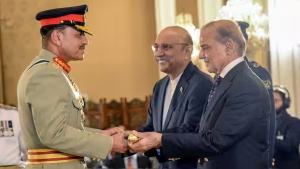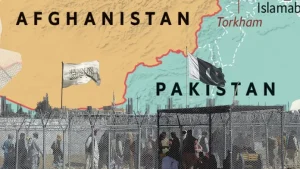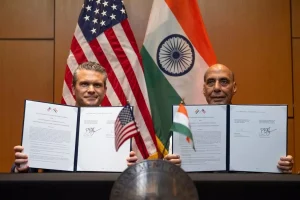The India – United States (US) partnership has often been described as one of the defining relationships of the 21st century. Yet, over the past few months, it has veered into uncharted turbulence. What began with a boastful phone claim by US President Donald Trump, claiming he had single-handedly brokered peace between India and Pakistan, spiralled into a tariff war, bruising words, and a test of resilience for bilateral ties.
Now, in characteristically erratic fashion, the same American president is once again holding out an olive branch to Indian Prime Minister Narendra Modi, speaking of “limitless potential” and calling him a “very good friend.”
The story of this sudden downturn and tentative thaw offers a window into the transactional instincts of Washington under Trump and the balancing act Modi is attempting – juggling US unpredictability with cautious outreach to China and reassuring old ties with Russia. For Pakistan, the episode underlines both the fragility of New Delhi’s foreign partnerships and the limits of opportunities that emerge when global powers stumble in their courtship of India.
From Flattery to Fury
Until recently, Trump and Modi enjoyed what seemed like an unusually warm rapport. The “Howdy Modi” event in Houston in 2019 and Trump’s own high-profile visit to India were spectacles designed to showcase a bond between two populist leaders. In sections of Indian public opinion, Trump was even celebrated as a friend who saw India as a rising power.
That sentiment evaporated quickly this summer. The immediate trigger was Trump’s claim in June that he had brokered a ceasefire between India and Pakistan after several days of clashes. Modi, in keeping with India’s long-standing policy of rejecting third-party involvement in Pakistan-related matters, publicly contradicted him. In contrast, Islamabad welcomed Trump’s role and even suggested he deserved a Nobel Peace Prize for his peacemaking.
The contrasting responses exposed Trump’s vanity. He did not take Modi’s dismissal lightly. Within weeks, Washington announced steep tariffs – 50 percent on Indian goods, including an additional 25 percent penalty tied to India’s import of Russian oil. Trump lashed out, describing India’s economy as “dead” and accusing it of financing Moscow’s war in Ukraine. What had been marketed as a “natural alliance” between the world’s two largest democracies now appeared to be in free fall.
Why the Fallout Happened?
Behind the tariff war were deeper frustrations. Washington had long been uneasy with India’s protectionist policies, particularly its high tariffs on agriculture and dairy products. Successive US administrations had pressed New Delhi for greater market access, with little success.
The Ukraine war sharpened tensions. India’s decision to buy discounted Russian crude was portrayed in the US not as an act of economic pragmatism but as complicity in financing Moscow’s war machine. While Europe continued to import Russian energy under carve-outs, Washington singled out India for censure. The inconsistency did not go unnoticed in Delhi, where officials insisted purchases remained within the G7’s price-cap regime.
Compounding matters was Trump’s obsession with personal credit. His disappointment over Modi’s rejection of his mediation claim, coupled with domestic political needs to show “toughness” on trade, produced a spiral of punitive actions and sharp rhetoric. From Delhi’s perspective, the US was engaging in “whiplash diplomacy” – praising India one day and belittling it the next.
Modi’s Calculated Patience
Despite the barrage from Washington, Modi refrained from matching Trump’s tone. For weeks, he stayed silent, letting Indian officials absorb the shock and signal displeasure. Only in September did he respond publicly, and only after Trump sounded conciliatory, carefully striking a matching note: “India and the US are close friends and natural partners. I am confident that our trade negotiations will pave the way for unlocking the limitless potential of the India-US partnership.”
This measured reply was no accident. For New Delhi, the US remains too important to antagonize – economically, strategically, and technologically. At the same time, Modi could not have afforded, domestically, to be seen as capitulating. By waiting until Trump dialed back his hostility and then reciprocating with warmth, Modi positioned himself as the partner willing to restore normalcy.
Indian External Affairs Minister S. Jaishankar amplified the message, stressing that Modi attached “enormous importance” to ties with the US but avoided specifics about concessions. The aim was to stabilize the situation without yielding ground on energy imports or sovereignty.
Enter Xi and Putin
The timing of Trump’s outreach was not accidental. Only days earlier, images from the Shanghai Cooperation Organization (SCO) summit showed Modi sharing pleasantries with Chinese President Xi Jinping and President of Russia, Vladimir Putin. Trump reacted angrily on social media, lamenting that the US had “lost India and Russia to deepest, darkest China.”
In reality, Modi’s meetings at the SCO were less about aligning with Beijing and more about keeping diplomatic doors open. India’s relationship with China remains defined by mistrust – border disputes, Beijing’s close ties with Islamabad, and regional competition. Yet, by engaging Xi, Modi projected flexibility and prevented India from appearing isolated.
With Russia, the context was different. The India–Russia relationship is rooted in decades of defense cooperation and energy ties that predate the Ukraine conflict. Modi’s handshake with Putin symbolized continuity, not defiance. Still, the optics of camaraderie with both Xi and Putin served as a useful signal to Washington: India has other partners, and it will not be coerced into a single alignment.
Trump’s Reset Attempt
Against this backdrop, Trump abruptly softened his tone. He declared that India and the US were engaged in productive trade talks, assured the public that there was “nothing to worry about,” and repeated that he would “always be friends with Modi.” Modi’s public reciprocation allowed both leaders to claim victory – Trump as the magnanimous dealmaker, Modi as the statesman who kept relations on track.
Yet, beneath the optics, little had changed. Tariffs remained in place. The fundamental disagreements over Russian oil, market access, and sovereignty persisted. For Delhi, Trump’s olive branch was welcome but not sufficient. As analysts noted, this was “an opening gambit, not a reset.”
India’s Emerging Playbook
India’s approach to the episode reveals a broader diplomatic strategy taking shape in Delhi:
1. Engage, But Hedge
India will respond positively to US overtures but maintain ties with Russia and keep communication channels open with China. This ensures alternatives if Washington proves unreliable.
2. Diversify Partnerships
Rather than depending solely on the US, India is actively pursuing free trade agreements with the United Kingdom (UK), Australia, the United Arab Emirates (UAE), and the European Free Trade Association (EFTA). This reduces vulnerability to US pressure.
3. Prioritize Domestic Optics
Modi would safeguard his domestic standing. Accepting ultimatums from Washington would invite political backlash. By portraying India’s energy decisions as sovereign and necessary for development, he seeks to reinforce an image of independence.
4. Transactional Precision
Delhi has learned that Trump thrives on personal respect but often shifts positions. Indian policymakers now seek to anchor any concessions in written agreements with measurable milestones, avoiding vague promises that can be reversed at will.
Lessons and Implications for Pakistan
From Islamabad’s perspective, the episode illustrates four points.
First, India’s partnership with the US, often hyped as ironclad, remains vulnerable to the mood swings of Washington. The same leader who hailed Modi as a close ally can just as easily deride him as a free rider. This volatility offers Pakistan room to maneuver, especially in highlighting India’s double standards on sovereignty and alignment.
Second, Modi’s willingness to lean on Moscow and keep a door ajar with Beijing underscores India’s balancing instinct. For Pakistan, this means China will continue to factor into India’s calculations, but the relationship remains limited by mistrust. Islamabad must therefore continue leveraging its own strategic ties with Beijing without assuming that India–China outreach will translate into a broader alignment.
Third, the episode shows that domestic politics in both Washington and Delhi shape foreign policy as much as strategic logic. Trump’s ego and Modi’s need to appear strong helped produce the tariff spat. Similarly, future crises may be driven less by policy differences than by the impulses of leaders.
Fourth, a strong pro-India lobby in Washington and institutionalized India – US ties will prevent a complete breakdown.
While Trump’s outbursts grab headlines, the reality is that India–US ties have been carefully built over decades. Key milestones include the 2005 nuclear 123 Agreement, the 2008 Joint Study Group statement, the 2014 “Chalein Saath Saath: Forward Together We Go” declaration, and the 2015 Joint Strategic Vision for the Asia-Pacific and Indian Ocean Region. These frameworks emphasize their shared values, security cooperation, innovation, and expanding economic engagement. The Quadrilateral Security Dialogue (Quad) further anchors India in US strategy for the Indo-Pacific. For Pakistan, the lesson is sobering. Islamabad often gets overly excited by minor positive signals from Washington, but the structural trajectory of US– India ties is deeply entrenched and not easily reversed.
Reading The Fragile Reset
The recent exchange of pleasantries between Trump and Modi has temporarily eased tensions, but the relationship remains unsettled. Structural differences, particularly on trade, on energy, and on India’s refusal to be anyone’s junior partner, leave open the possibility that turbulence will return. Modi’s interactions with Xi and Putin at the SCO were not signs of a grand pivot, but reminders that India values options.
For Pakistan, the episode is a reminder that US–India ties are far from invulnerable. The “limitless potential” that both Trump and Modi like to speak of can just as easily be undermined by vanity, tariffs, and mistrust. In a multipolar world, India’s hedging creates both uncertainty and opportunity – especially for those willing to read between the smiles and the handshakes.
However, the challenge is to read these dynamics with clear eyes. The turbulence in US–India ties may offer tactical openings, but the structural depth of the partnership remains intact. Pakistan’s diplomacy must therefore combine realism about Washington’s long-term tilt toward Delhi with agility in exploiting moments of friction, all while reinforcing its own value to the US in regional stability, counterterrorism, and connectivity.



